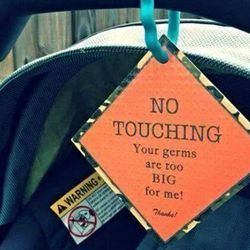Teaching More than Just Consent
How to say no even when pressured or overwhelmed.

by Jess Wartinger
Mar 01, 2018
As story after story of sexual abuse overwhelms our media, there comes a point when we have to stop and wonder what the root problem is. Are we, as parents, contributing to a culture where our young children are unprepared to stand up to potential abusers?
This thought is horrifying. As a parent, you do everything possible to keep your children safe. Yet statistics are showing abuse is extremely prevalent, with many children knowing their abusers.
According to Darkness to Light, 1 in 10 children will be sexually abused, with 20% of victims under age 8. An overwhelming 90% of child sex abuse victims know their abusers and 60% of these abusers are people families trusted.
The abuse of today isn’t the stranger danger of the past.
Lets take a close look at what we, as parents, can do differently, what skills our children need, and how to teach more than just consent. Let’s prepare for the worst and set your family up for success along the way.
A New Normal
Any conversation about teaching consent needs to begin with a careful look at what we’re currently demonstrating to our children.
Here are some ways in which current parenting trends may be doing more harm than good:
➔ Teaching our children to mindlessly accept authority instead of respectfully question adults.
➔ Taking over for our children in stressful situations and fixing their problems instead of practicing how to rise up in their own strength and stepping aside to let them try it out.
➔ Training our children that showing physical affection to others (even family members) is required to avoid hurting anyone’s feelings.
➔ Ignoring our child’s natural sense of bodily autonomy, effectively hushing his inner voice, so he’ll fit in with physical expectations in a social situation (hugging, kissing, snuggling, etc).
➔ Forgetting that sometimes a child’s “yes” can change to a “no”.
Consent is Only the Beginning
With so many areas that could use our attention, teaching our children about consent is only the tip of the iceberg.
With young children, it’s possible (perhaps even probable) that consent is given initially without fully understanding or realizing the implications of that decision. Children need to have both vocabulary and practice of how to withdraw consent at any time.
Here are some ways to teach your children consent (and so much more):
➔ Teach your children how to firmly say the following: No thank you. I don’t like this. Don’t touch me.
➔ Encourage your child that her voice is important and enact a standing rule that hearing your child say “no” or “stop” will always be respected.
➔ Teach children about their feelings, including what it is like to be uncomfortable. Work to help your child be in-touch with the gut-feeling of discomfort around others.
➔ Be available as a listening, non-judgemental ear for your child. Whatever the conversation, be involved and teach by example how to come to you about anything without shame.
➔ Each individual child is in control of who she decides to show physical affection to (hugging, kissing, tickling, etc.), even at the risk of offending extended family members.
Consent Throughout the Day
While it may seem overwhelming to begin discussions about consent with your children, it doesn’t need to be. Learning consent can be a simple, normal part of everyday life.
Here are some everyday situations when your child can practice giving consent:
➔ Diaper Changes: I’m going to need to wipe you now, are you ready to be wiped?
➔ Buckling Car Seats: The buckle is stuck under your bottom. Is it okay if I get it unstuck for us?
➔ Bath Time: I’m going to wash your arms and legs. How about you try to wash your bottom?
➔ Tickling: Would you like to be tickled? When you’re ready to be done, just say, “stop”.
➔ Hugging or Kissing: Would you like to give Grandma a hug goodbye? How about you wave goodbye instead then?
Teaching consent has everything to do with encouraging strength of body and mind. While past generations may have found it normal to demand physical affections between extended family members, this is no longer acceptable today.
Be prepared to teach your children how to say no, even when pressured or overwhelmed.
Be aware of what demands they may be receiving for physical affection.
Be determined to affirm your child’s inner voice instead of crush it.
These lifelong skills, rooted in childhood, can make all the difference as your little one grows.
Article Continues Below Advertisement
Jess Wartinger
Jess Wartinger resides in rural New York with her husband and five children. Formerly an early elementary teacher, Jess currently spends her time loving her kids and holding down the fort at home.










